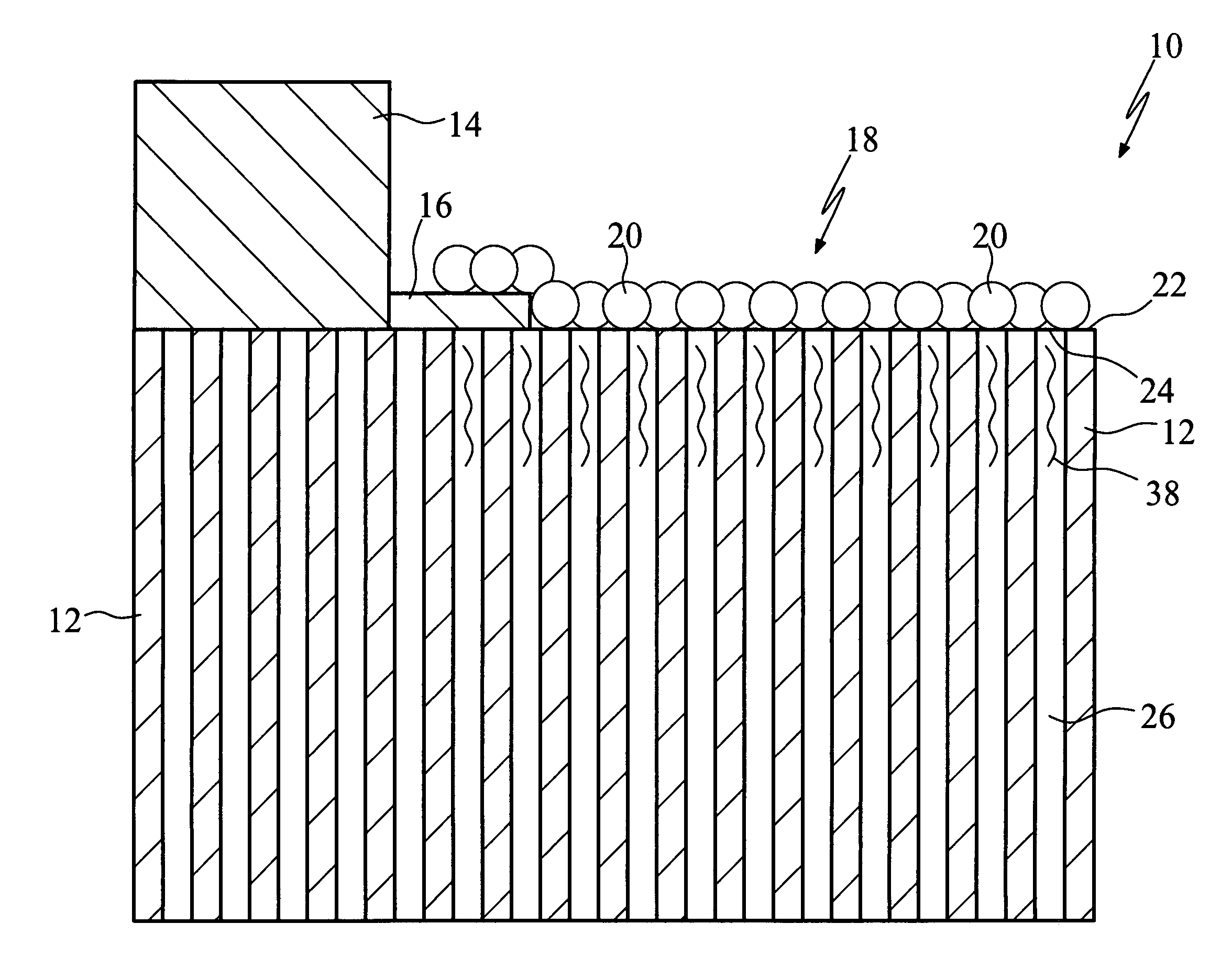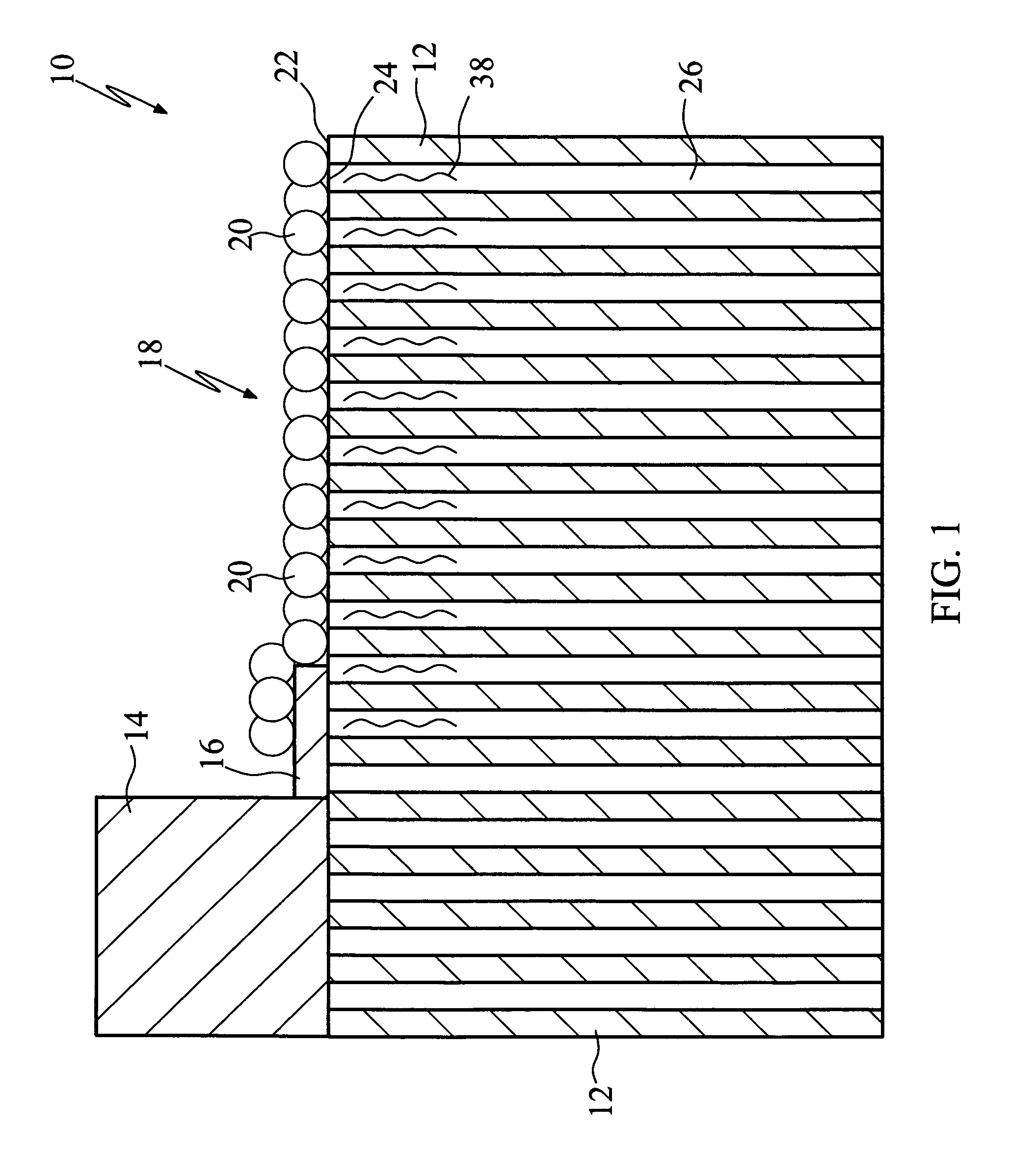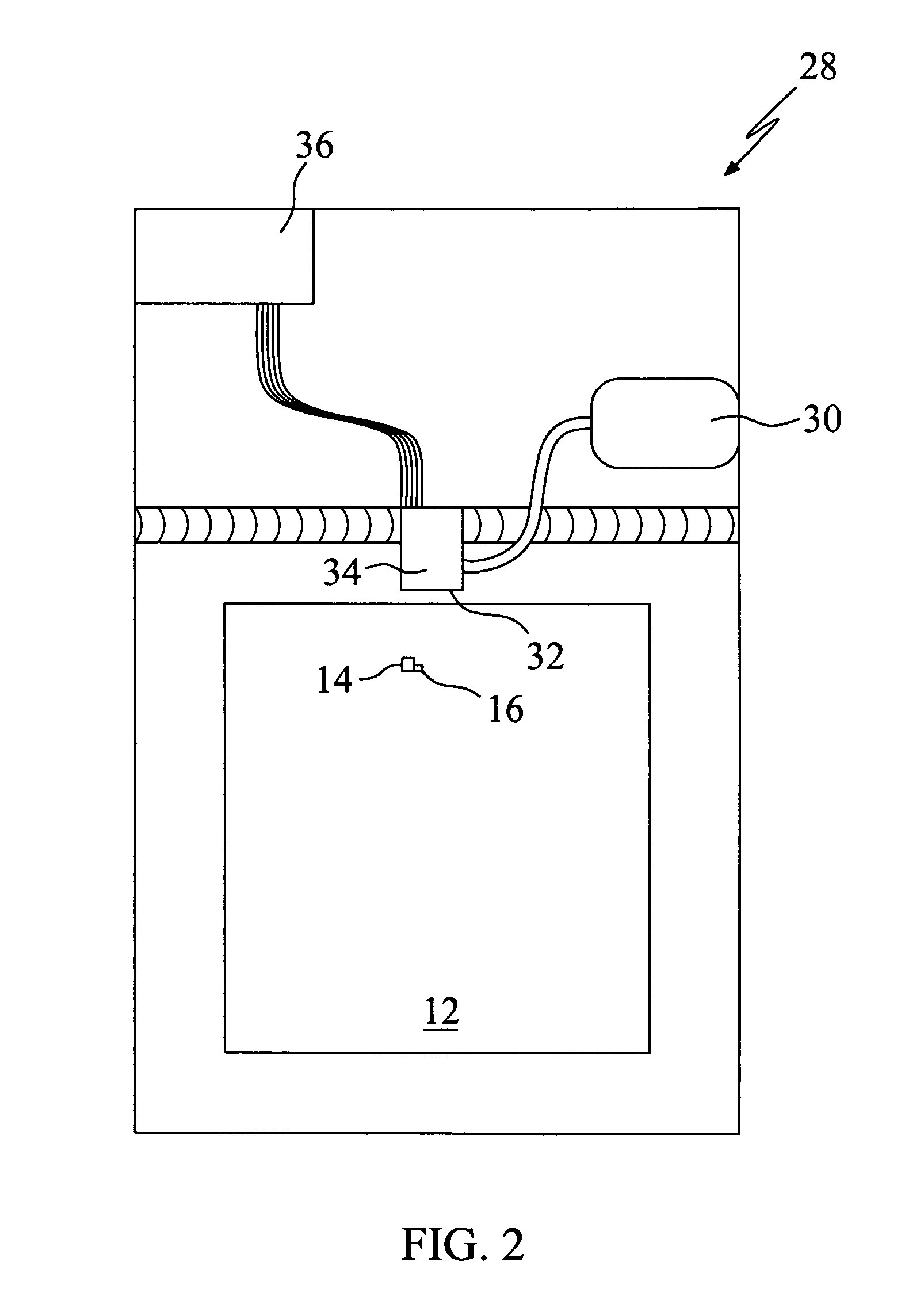Deposition fabrication using inkjet technology
a technology of inkjet printing and deposition, applied in the field of inkjet printing, can solve problems such as plating and etching, and achieve the effects of greater precision and density, and small area
- Summary
- Abstract
- Description
- Claims
- Application Information
AI Technical Summary
Benefits of technology
Problems solved by technology
Method used
Image
Examples
Embodiment Construction
[0020]The exemplary embodiments of the present invention are described and illustrated below to encompass methods, and devices produced in accordance with such methods, for depositing conductive materials upon a filtered substrate. Of course, it will be apparent to those of ordinary skill in the art that the preferred embodiments discussed below are exemplary in nature and may be reconfigured without departing from the scope and spirit of the present invention. In addition, those of ordinary skill will readily comprehend various devices that may be fabricated in accordance with the methods discussed herein and, therefore, the disclosure is not limited to the exemplary embodiments discussed herein, as these embodiments are for purposes of illustrating the invention only. However, for clarity and precision, the exemplary embodiments as discussed below may include optional steps or features that one of ordinary skill will recognize as not being a requisite to fall within the scope of t...
PUM
| Property | Measurement | Unit |
|---|---|---|
| mean diameter | aaaaa | aaaaa |
| conductive | aaaaa | aaaaa |
| micropores | aaaaa | aaaaa |
Abstract
Description
Claims
Application Information
 Login to View More
Login to View More - R&D
- Intellectual Property
- Life Sciences
- Materials
- Tech Scout
- Unparalleled Data Quality
- Higher Quality Content
- 60% Fewer Hallucinations
Browse by: Latest US Patents, China's latest patents, Technical Efficacy Thesaurus, Application Domain, Technology Topic, Popular Technical Reports.
© 2025 PatSnap. All rights reserved.Legal|Privacy policy|Modern Slavery Act Transparency Statement|Sitemap|About US| Contact US: help@patsnap.com



